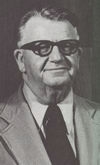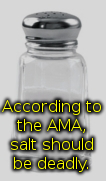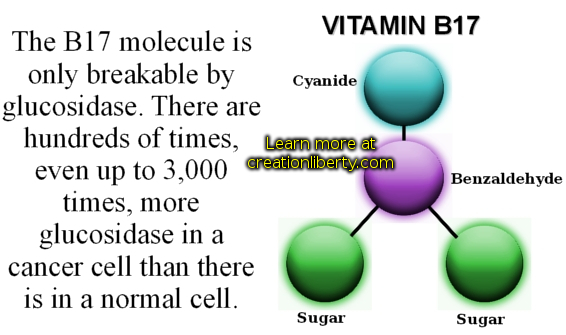 | In the early 1900s, Dr. Ernst T. Krebs, a graduate phamacist and accredited physician in Nevada, was the first modern scientist to use an antibiotic in medicine by studying Washoe Indian herbal remedies. After finding a more efficient way to extract the healing properties of the plants, he created what is known today as "leptonin," and helped save almost a hundred of his patients suffering from bacterial disease. However, the Journal of American Medical Association ignored his findings, and the cure was not rediscovered until almost 30 years later. |
(See Journal of American Medical Association, Nov 1920, Vol. 75, No. 19, p. 1299; See also H. J. Carlson & H. G. Douglas, and H. D. Bissell, Journal of Bacteriology, May 1948, Vol. 55, p. 607-614; See also Antibiotics and Chemotherapy (3 (4) 393), 1953)
After the study of natural remedies for bacterial disease (and from study in the work of Professor John Beard, who linked cancer to enzymes), Dr. Krebs picked up an interest in studying cancer. He noticed the Washoe Indians, as well as other native tribes, did not have the same cancerous diseases that white men had. This prior experience led Dr. Krebs to look for a cure in natural foods and herbs.
This research was later completed by Krebs's son, Dr. Ernst T. Krebs Jr. (doctorate is honorary), who studied in anatomy and medicine at Hahnemann Medical College for three years, received his bachelor's degree in bacteriology from the University of Illinois, and did his graduate work at the University of Mississippi and the University of California. Dr. Krebs Jr picked up his father's (and Professor Beard's) research and made many discoveries, the most important of which was vitamin B17 (amygdaline), which is found most commonly in the seeds of fruits and vegetables. Krebs's discovery of B17 led him to develop a concentrated pill form called "laetrile."
| Many people immediately object, claiming that one should not eat the seeds because they contain cyanide. It is correct they contain cyanide, but it is incorrect that they should not be consumed. Oxygen, for example, will ignite a fire, as will hydrogen. It would be foolish to spray hydrogen and oxygen on to a fire, right? However, every fireman in the world does it. It's called H2O. The hydrogen and oxygen bond together and form a substance that is beneficial. Another example, chlorine gas is a deadly substance you would not want in your body, but when sodium is bonded with chlorine, it forms sodium chloride, more commonly known as "table salt." |  |
B17 is two units of glucose (sugar), one of benzaldehyde, and one of cyanide. Many people know cyanide can be deadly, but in this state, the chemical components are inert and have no effect on the body. There is only one enzyme that can unlock the cyanide and benzaldehyde, and that is called beta-glucosidase.
Beta-glucosidase is like the key to unlock the toxic chemicals, and there is only one place in the body where enough can be found to unlock them: inside the cancer cell. The cancer cell contains hundreds of times more "keys" than any other cell in your body, and this attracts the B17. The benzaldehyde and cyanide combine to form a poisonous substance that destroys the cancer cell, and only at that location, but after the reaction, the toxic chemicals become harmless to your body.

The natural question now is, what happens to the benzaldehyde and cyanide after they kill off the cancer cell? First, benzaldehyde will oxidize when it comes into contact with oxygen. The cancerous cells are mostly void of any oxygen, which has caused them to ferment and become dangerous to your body. Once the benzaldehyde comes in contact with a normal cell, it will oxidize, and be converted to benzoic acid, which is healthy for you. (benzoic acid has antiseptic properties) The cyanide will be broken down by a protecting enzyme called "rhodanese," which is found in large quantities all over your body. The only place rhodanese enzymes are not found are in cancer cells, which means they are unprotected and will be killed off. (and that's good!) The cyanide is then converted into cyanocobalamin, which becomes part of the B12 molecule. When taken in large quantities, cyanide and benzaldehyde can be deadly, but on a microscopic level within their bonded state, both of these substances are neutralized by your body's natural chemical defenses, and becomes not only harmless, but nutritious.
(See Dr. Ross Pelton & Dr. Lee Overholser, Alternatives in Cancer Therapy, 1994, p. 155, ISBN: 0-671-79623-2; See also G. Edward Griffin, World Without Cancer, 18th Edition, March 2006, p. 86-91, ISBN: 0-912986-19-0)
Though B17 is found in many grasses and herbs, scientists have found it is most highly concentrated in the seeds of fruits and vegetables. These findings back up God's instructions to man, but most people are still very skeptical because they are confused about why this would not be known to the world. We'll get to the reasons for the suppression of this knowledge later, but first let's look at some other evidences of the use of B17 in active diets.
No comments:
Post a Comment